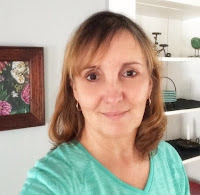By W. Terry Whalin @terrywhalin
Can you identify with my title for this article? Whether you are just starting in publishing or have been doing it for years, you may be tired of pitching. Yet pitching is a reality into the fiber of every aspect of publishing. If I’m honest, some days I don’t want to pitch but after a long time in this business I’ve learned the hard way that if I don’t pitch then nothing happens.
For example, I’ve been teaching at a large writers’ conference almost every year for decades. Last year I participated in the event as an editor, but I did not teach a workshop or single session. As I thought about it, I understood why I wasn’t a part of the teaching instructors. I did not pitch any workshops (new or old) to the conference director. Other people did pitch possible workshops and their sessions filled the schedule.
Every aspect of publishing involves pitching. To get an agent, you have to make a connection with them at a conference or pitch a book or book proposal that captures their attention. It’s the same for a publishing house. You can’t get a book deal without some sort of pitch that shows why you are the unique person to write and publish this particular book.
Pitching is not just for agents and editors; it is a critical part of the process for magazine work as well. You will have to learn to write a query letter, or a one-page pitch targeted to that publication and get the editor’s attention and request for you to submit your article.
When it comes to marketing and selling your book, it also involves—yes pitching. Radio station producers, podcasts hosts, bloggers for guest blogging articles and even writing for local or national newspapers—each aspect involves learning the specialized steps to catch their attention and get on their show or podcast or publication.
And when it comes to reaching readers, you have to pitch something to them that they want so they will join your email list (and then stay on your email list and not unsubscribe). To get the gig, every author has to learn to pitch.
There are a few exceptions to my statements about pitching. You can hire a publicist (after you get their attention (pitch). Then this publicist will do the pitching and scheduling of interviews for you. Or maybe you are invited to become a regular columnist for a publication. Even these regular gigs can come to a sudden end. For one well-known publication in one issue, they announced I was their book review columnist—then the editors abandoned the column with their next issue. Change is one of the consistent elements of publishing. One day you are up and the next day you are down—but you still have to continue pitching.
I may be tired of pitching but if I want to continue to be an active part of the publishing community, I’m going to continue to pitch. It’s like a teacher tired of teaching. Each of us need to understand it’s part of the fiber of this business and work every day to perfect our pitch and open more doors of opportunity. Every writer has a wide-open door of opportunity, but you have to take action and knock on the right door—which will take some effort and work but is definitely possible.
What steps do you take if you are tired of pitching? Let me know in the comments below.
Tweetable:
W. Terry Whalin, a writer and acquisitions editor lives in Colorado. A former magazine editor and former literary agent, Terry is an acquisitions editor at Morgan James Publishing. He has written more than 60 nonfiction books including Jumpstart Your Publishing Dreams and Billy Graham. Get Terry’s recent book, 10 Publishing Myths for only $10, free shipping and bonuses worth over $200. To help writers catch the attention of editors and agents, Terry wrote his bestselling Book Proposals That $ell, 21 Secrets To Speed Your Success. Check out his free Ebook, Platform Building Ideas for Every Author. His website is located at: www.terrywhalin.com. Connect with Terry on Twitter, Facebook and LinkedIn.

.gif)







